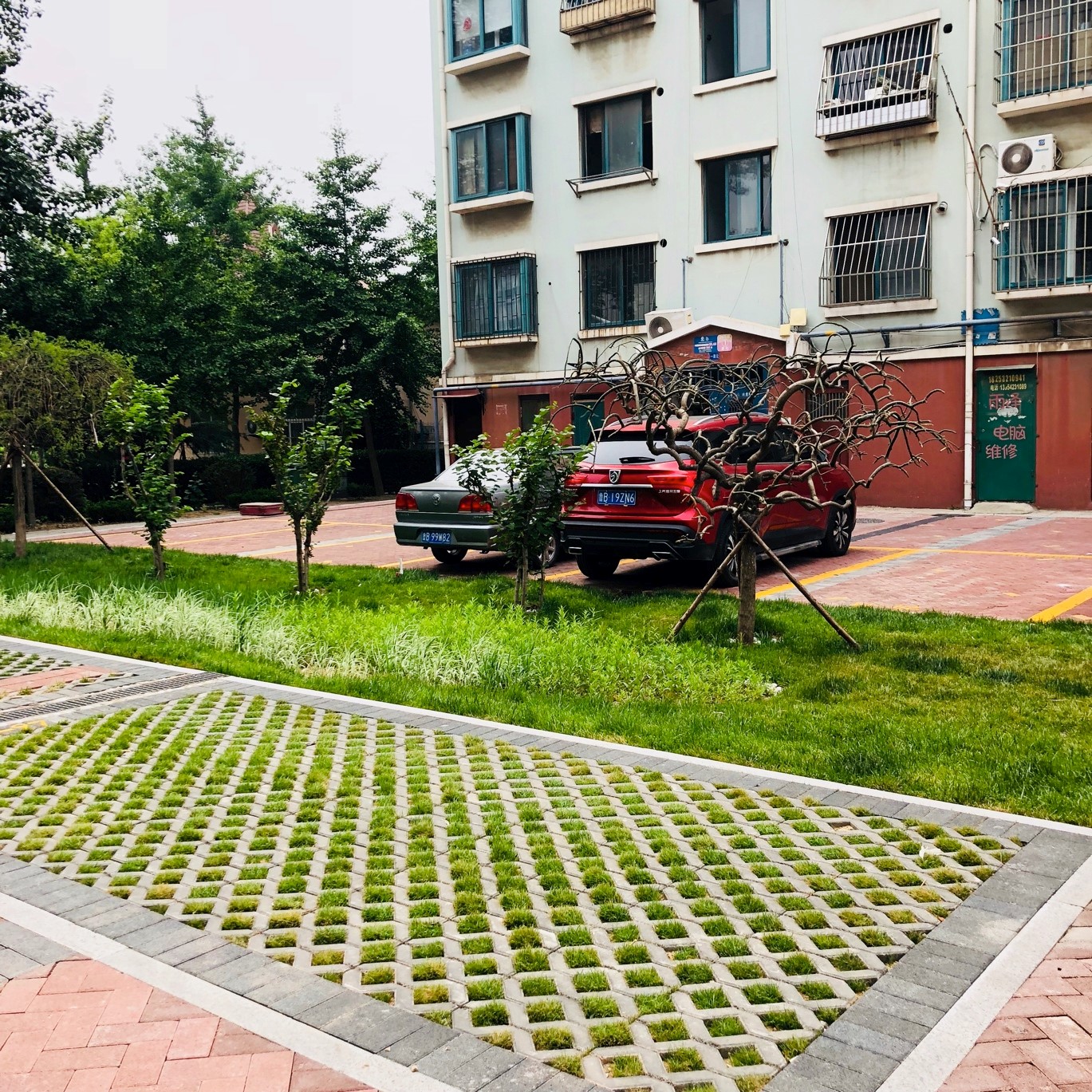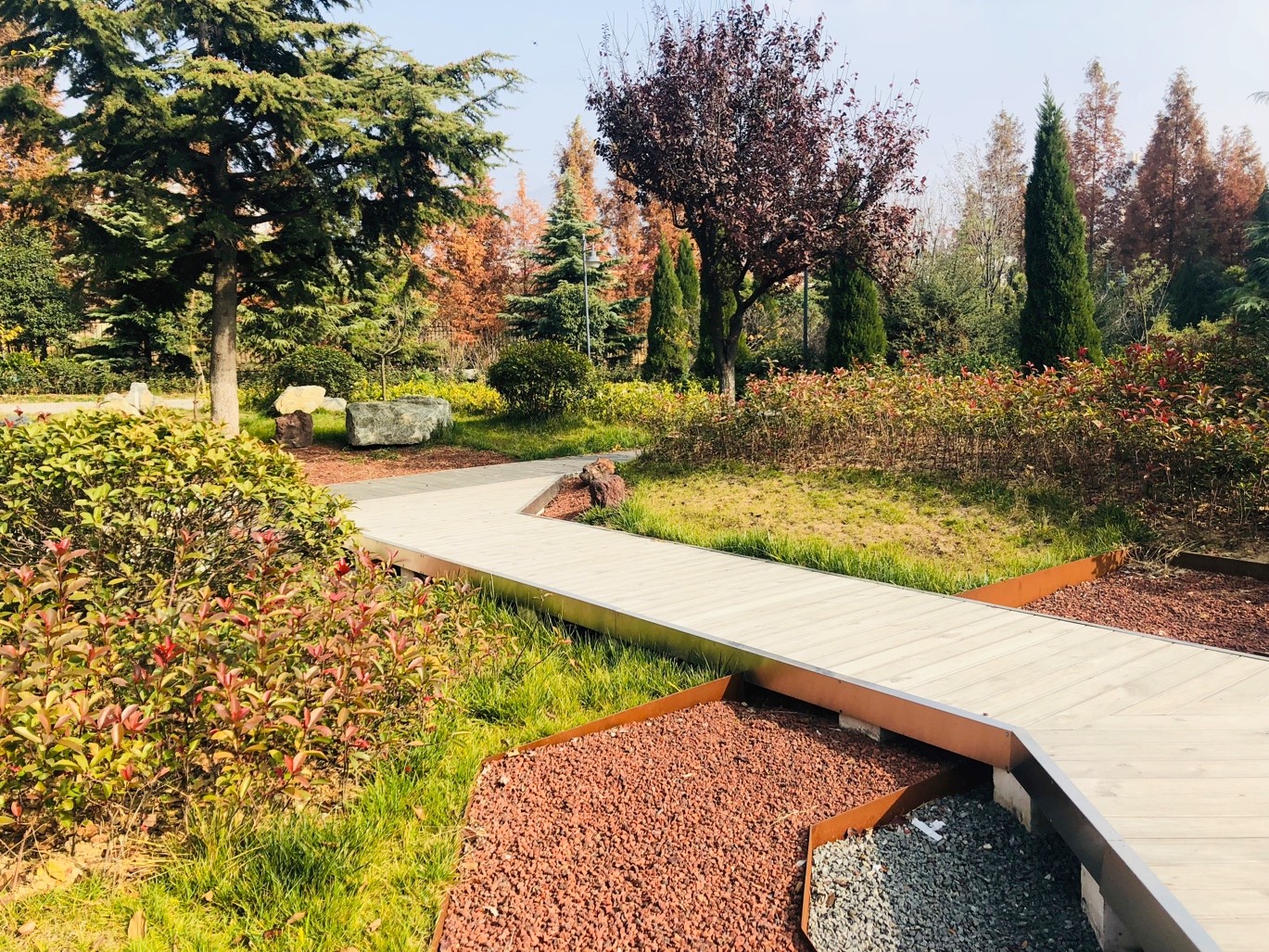


Licang Cultural Park
There was a time when buildings cut the sky and earth of a city apart. But now, sponge city development allows urban areas to "breathe.” Qingdao, a coastal city in east China’s Shandong Province, is fast becoming more livable and beautiful.
Sponge cities, or water resilient cities, increase urban resilience to climate change through improved stormwater management. In a sponge city, the flow of surface water is slowed, mimicking the way that nature manages water, helping to reduce flooding and pollution.
In April 2016, Qingdao successfully applied to be in the second batch of pilot sponge cities. For more than two years, Qingdao has stuck to the construction target of "smooth river course, beautiful shores, harmony between people and water, ecological livability and coastal features,” to build a “Sponge Qingdao” with unique characteristics, providing an example of water resilient city construction.
In 2016, Licang became the pilot district for Qingdao's water resilience, and Qingdao appointed Licang Cultural Park as a pilot project. Upon the field investigation, Qingdao put forward a design idea of "mountain control, dry stream diversion, water storage.”

Loushanhou community
Resident Mr. Jiang, who often comes to Licang Cultural Park, explained that the changes had a positive impact, "Since I retired, my wife and I have come here every day to sing and dance. However, we couldn't come on a rainy day. Now, even if it rains, the park won't flood, so we can still enjoy our daily activities."
Licang district adopts a PPP model of "basin packaging, pay for effect” in construction. There are 182 pilot projects in 8 categories, such as building and community, parks and green spaces and the overall improvement of drainage, which requires a total investment of 4.87 billion yuan. By the end of August 2018, 111 items were completed across an area of 18 square kilometers, with a total investment of about 2.8 billion yuan. Forty areas are still under construction, covering an area of about 7 square kilometers.
Qingdao implemented renovation projects in old residential areas such as Hupanyaju community, Huatai community and Baitongxinyuan community to solve the problems of water-logging and the water degradation in residential areas.
Now, the sponge city construction of Qingdao is gradually advancing from pilot demonstration to the whole region, with more than 20 communities requesting the sponge transformation. By the beginning of September 2018, the total area of sponge city construction was about 115 square kilometers, accounting for 14.2 percent of the entire urban area, with another 62 square kilometers under construction.
Qingdao is becoming more environmentally-friendly, livable and attractive thanks to the sponge city construction.

Qingdao Longhu Park
Walking down Qingdao Licun riverside in autumn, passers-by can see swallows fly across the water. As one of Qingdao's major rivers, the Licun river is important for flood outflow. The dry season is frequently shortened, severely affecting the water self-purification capacity.
"Sponge city construction should effectively solve the problem of rain-sewage mixing, eliminate urban flood disasters and other issues, and strive to build a sponge Qingdao with natural accumulation, natural infiltration, and natural purification. Since the beginning of 2018, Qingdao has implemented ecological water replenishment for the Llicun river, which has accumulated about 9.88 million tons. Since Sept. 19, water has been replenished to the Licun river delta, and by Oct. 16, it has replenished more than 2.8 million tons, with the capacity to provide 200,000 tons of water per day.
"We must strive for quick results in efficiency, and reap lasting benefits in the long run,” said the person in charge of Qingdao's sponge city construction promotion department. "Qingdao plans to minimize the impact of urban development and construction on the ecological environment through sponge city construction, achieving the goal of absorbing and using 75 percent of rainwater on site and on time. By 2030, more than 80 percent of urban areas will meet the target.”

Foreign Trade Vocational College
Today, the integrated monitoring and control platform of the pilot area based on the Internet of things and big data technology in Qingdao has almost been completed, with over 300 sets of online monitoring equipment already installed.
As China's second batch of sponge city pilots, Qingdao plays a leading role in the pilot demonstration, and provides an excellent example for sponge city construction in similar cities. Under Laoshan mountain, the shore of the Yellow Sea, Qingdao can breathe.

 Award-winning photos show poverty reduction achievements in NE China's Jilin province
Award-winning photos show poverty reduction achievements in NE China's Jilin province People dance to greet advent of New Year in Ameiqituo Town, Guizhou
People dance to greet advent of New Year in Ameiqituo Town, Guizhou Fire brigade in Shanghai holds group wedding
Fire brigade in Shanghai holds group wedding Tourists enjoy ice sculptures in Datan Town, north China
Tourists enjoy ice sculptures in Datan Town, north China Sunset scenery of Dayan Pagoda in Xi'an
Sunset scenery of Dayan Pagoda in Xi'an Tourists have fun at scenic spot in Nanlong Town, NW China
Tourists have fun at scenic spot in Nanlong Town, NW China Harbin attracts tourists by making best use of ice in winter
Harbin attracts tourists by making best use of ice in winter In pics: FIS Alpine Ski Women's World Cup Slalom
In pics: FIS Alpine Ski Women's World Cup Slalom Black-necked cranes rest at reservoir in Lhunzhub County, Lhasa
Black-necked cranes rest at reservoir in Lhunzhub County, Lhasa China's FAST telescope will be available to foreign scientists in April
China's FAST telescope will be available to foreign scientists in April